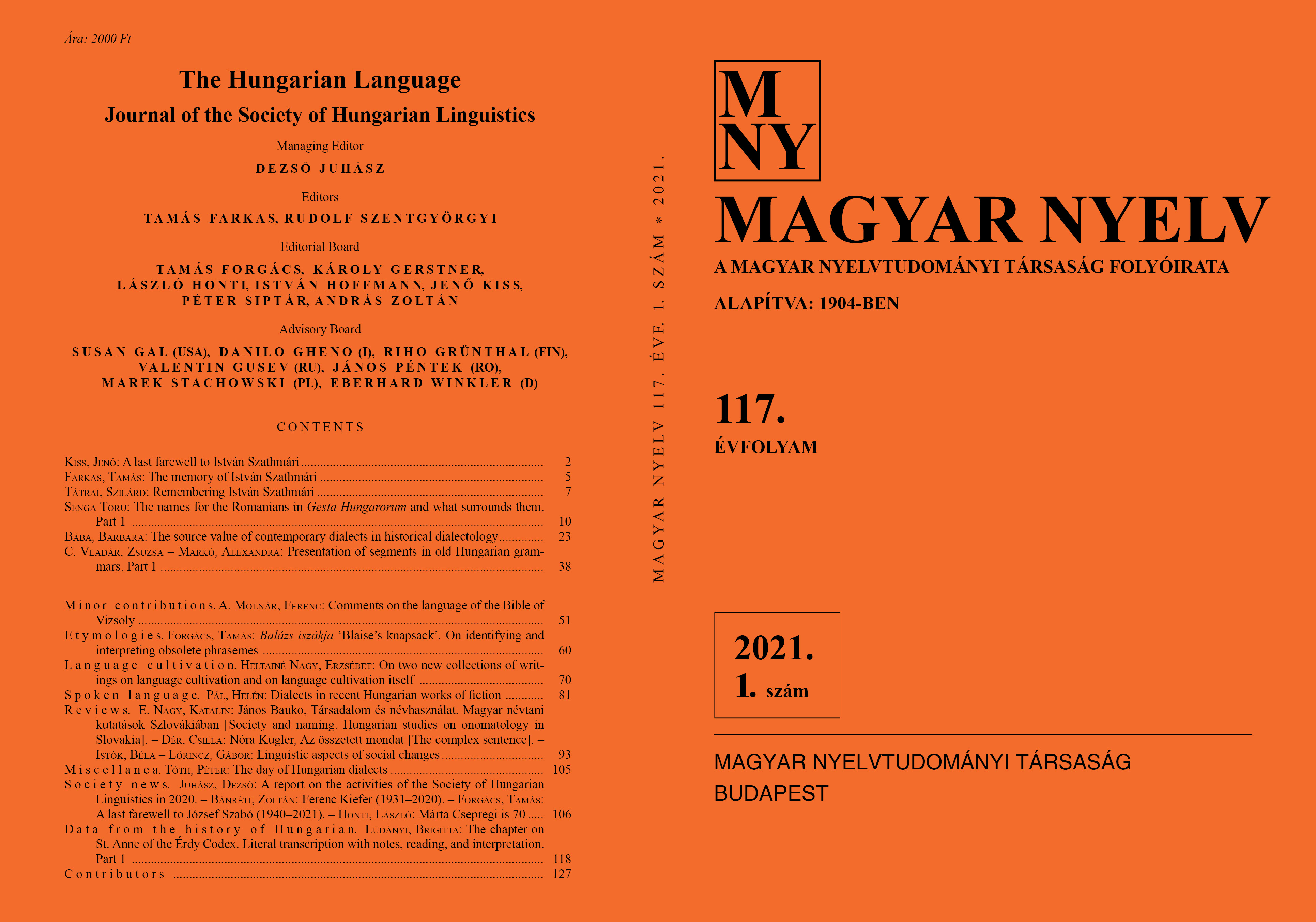Dialects in recent Hungarian works of fiction
DOI:
https://doi.org/10.18349/MagyarNyelv.2021.1.81Keywords:
dialect, literacy in dialects, standard language, language of literature, transborder Hungarian languageAbstract
Hungarian dialects were used orally and in writing too before the formation of standard language. For this reason, dialectal elements can be found in several literary works, not only prior to the formation of standard language but also after it. Nowadays low prestige is connected with Hungarian dialects, but the written and spoken standard variety has high reputation (Kiss 2012: 55). However, Hungarian beyond the state borders usually has more dialectal elements than this language has in the mother country; therefore, in this case the disdain of Hungarian dialects is controversial. From the aspect of Hungarian dialects, we should revise the definition of the language of literary works and that of standard language, too, in school education. Dialectal elements of works of fiction written before the formation of the Hungarian standard language or beyond the state borders are part of the language of Hungarian literature as well.
Downloads
Published
Issue
Section
License
Copyright (c) 2024 Helén Pál

This work is licensed under a Creative Commons Attribution-NonCommercial-NoDerivatives 4.0 International License.
Magyar Nyelv is a Diamond Open Access periodical. Documents can be freely downloaded and duplicated in an electronic format, and can be used unchanged and with due reference to the original source. Such use must not serve commercial purposes. In the case of any form of dissemination and use, Hungarian Copyright Act LXXVI/1999 and related laws are to be observed. The electronic version of the journal is subject to the regulations of CC BY-NC-ND (Creative Commons – Attribution-NonCommercial-NoDerivatives).
The journal permits its authors, at no cost and without any temporal limitation, to make pre-print copies of their manuscripts publicly available via email or in their own homepage or that of their institution, or in either closed or free-for-all repositories of their institutions/universities, or other non-profit websites, in the form accepted by the journal editor for publication and even containing amendments on the basis of reviewers’ comments. When the authors publicize their papers in this manner, they have to warn their readers that the manuscript at hand is not the final published version of the work. Once the paper has been published in a printed or online form, the authors are allowed (and advised) to use that (post-print) version for the above purposes. In that case, they have to indicate the exact location and other data of the journal publication. The authors retain the copyright of their papers; however, in the case of an occasional secondary publication, the bibliographical data of the first publication have to be included.



